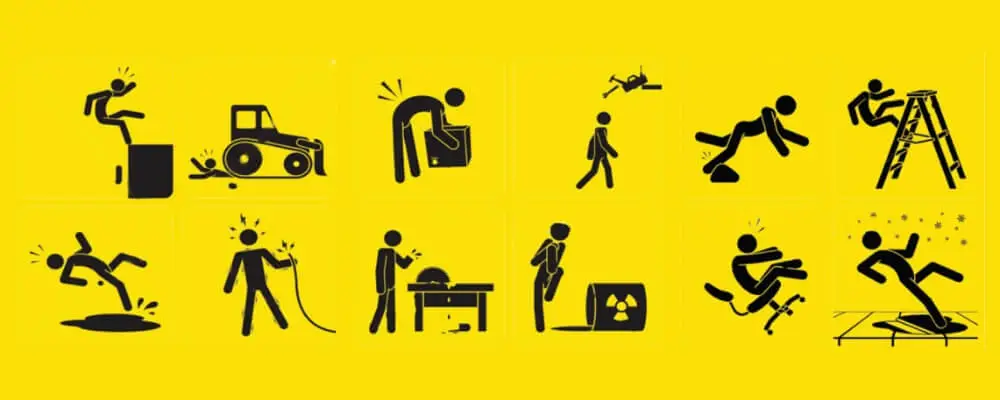Safety at work is like having a strong net below a tightrope walker, catching any slip before it turns into a fall. One of the best ways to strengthen this net is by noticing and talking about “Good Catch” or “Near Miss” moments. These are the times when something could have gone wrong, but someone spots the problem and stops it in time. But how can we make sure everyone understands and shares these close calls? How do we encourage everyone to speak up?
This blog reviews the top ten ways to discuss and report these moments. We will explore why this is crucial for every workplace and provide simple steps to make the process easier and more effective. Together, we’ll discover the value of learning from these almost-mistakes and see how they can guide us toward a safer and more efficient work environment. Join us on this journey to reinforce our safety net and ensure a more secure workspace for all.
What Are Good Catches?
“Good Catches” are proactive safety actions or interventions that identify and correct a potential hazard or error before it results in harm or a more significant adverse event. They capture incidents that could have gone wrong but were averted due to timely recognition and intervention. The term is commonly used in industries like healthcare, where early detection of potential errors can mean the difference between life and death, but the concept applies across many fields.
The importance of Good Catches includes:
- Preventing Harm: A Good Catch’s most immediate and obvious benefit is preventing potential harm. By recognizing and addressing risk in its early stages, the damage can be completely averted.
- Learning Opportunities: Good Catches provide invaluable insights into the vulnerabilities of a system. They offer organizations the chance to learn from what almost went wrong rather than waiting for something adverse to happen.
- Continuous Improvement: By analyzing Good Catches, organizations can refine their procedures, provide better training, or implement new safety measures, ensuring continuous improvement in safety and operational protocols.
- Cultivating Safety Culture: Recognizing and celebrating Good Catches can promote a positive safety culture. It reinforces the idea that every team member has a role in ensuring safety and that their vigilance is appreciated and vital.
- Cost Savings: While Good Catches primarily focuses on safety, there’s also a financial perspective. Averting errors or accidents can save organizations from costly repairs, legal fees, compensation, or other expenditures associated with significant adverse events.
- Enhancing Reputation: In industries where safety is a paramount concern, such as healthcare, aviation, or nuclear energy, a record of proactive safety measures can bolster an organization’s reputation, leading to increased trust from clients, customers, or the general public.
Good Catches are an integral component of a proactive safety culture, where potential problems are identified and addressed before they escalate into actual harm. They signify a commitment to excellence, vigilance, and continuous improvement.

Best Practices for Good Catch or Near Miss Reporting
“Catch” or “Near Miss” reporting is critical in improving safety and operational performance within various industries. These reports allow organizations to identify potential hazards or procedural weaknesses before they result in injuries or other losses. Here are ten best practices for good “Catch” or “Near Miss” reporting:
1. Foster a Positive Reporting Culture
In any organization, culture plays a significant role in shaping behaviors. In near-miss reporting, cultivating a culture emphasizing understanding over blame is essential. Employees should never feel that they will be penalized or stigmatized for shedding light on potential hazards. Instead, they should feel that their contributions are crucial in safeguarding their well-being and their colleagues.
Encouraging a blame-free environment means focusing on systemic and procedural improvements rather than individual fault-finding. Additionally, recognition and rewards can be potent tools. By celebrating those who come forward with valuable insights, you acknowledge their effort and set a positive precedent for others to follow.
2. Define “Near Miss”
Clarity is key when you want people to take action. If employees are uncertain about what qualifies as a “near miss” or a “good catch,” they might hesitate to report or overlook potential risks. By providing a clear definition, perhaps with examples, organizations empower their teams to identify and flag concerns appropriately. This clarity ensures that minor incidents, which could be precursors to more severe accidents, are not unnoticed.
3. Simplify Reporting Process
When something feels tedious or complicated, it’s human nature to procrastinate or avoid it. Reporting near misses should be as frictionless as possible. This means creating avenues that are intuitive and user-friendly.
Whether that’s an online portal accessible from any device, a mobile application tailored for on-the-go submissions, or a strategically located physical form – the emphasis should be on ease of use. When employees find it simple to report, the likelihood of them taking that extra step increases significantly.
4. Prompt Reporting
The passage of time can erode the precision of memories. What was once a vivid recollection can become a hazy afterthought. When it comes to safety and operational efficiency, details matter. By encouraging prompt reporting, you’re ensuring these details are captured when they’re most fresh. Immediate reports allow for a richer, more accurate picture of what transpired. This, in turn, aids in pinpointing the root causes and strategizing effective preventative measures.

5. Ensure Anonymity
Trust is a cornerstone of effective reporting. Some employees might be wary of potential backlash or prefer not to be in the spotlight. By offering an option for anonymous reporting, organizations cater to these concerns. Knowing that one can voice concerns without being personally identified can significantly reassure many. It’s not about shielding someone but rather about creating an environment that focuses on the message, not the messenger.
6. Detailed and Objective Descriptions
The quality of information captured during near-miss reporting can greatly influence the outcomes of subsequent actions. Employees must understand the importance of providing detailed, factual, and objective accounts of the incident. Training sessions can be organized to guide staff on articulating incidents without veering into personal opinions or blame.
By emphasizing the importance of specificity—capturing the exact events as they unfolded, the location, timing, and surrounding conditions—organizations can obtain a clearer picture of the factors that contributed to the near miss, allowing for more effective preventative strategies in the future.
7. Analysis and Investigation
The reporting of a near miss is only the beginning of a process. Once an incident is documented, it becomes crucial to delve deeper into its causes. A comprehensive analysis and investigation will unearth the immediate triggers and any underlying systemic issues. Even minor incidents, which on the surface might seem insignificant, can be indicators of larger operational or safety gaps.
By adopting a rigorous approach to understanding the intricacies of every report, organizations can ensure they are not merely addressing symptoms but are getting to the heart of potential problems.
8. Feedback Loop
Communication is a two-way street. When employees take the initiative to report a near miss, the organization must close the loop by acknowledging their efforts. Feedback serves multiple purposes. It assures the reporter that their observations are valued and taken seriously. This recognition can motivate other employees to come forward with their own reports.
Additionally, informing the reporter about any subsequent actions resulting from their report reinforces the practical impact of their vigilance, fostering a proactive safety culture.

9. Regularly Review and Share Data
The power of aggregated data should not be underestimated. Regular reviews of collected near-miss reports can illuminate recurring patterns, trends, or vulnerabilities within the system. While individual reports are valuable, a holistic view can provide insights that might be missed in isolation. It’s also beneficial to share these insights with the entire staff.
This educates them about common issues and underscores the collective responsibility of maintaining a safe environment. While sharing, care should be taken to maintain confidentiality and ensure that no individual is singled out or made to feel targeted.
10. Continuous Improvement
The ultimate goal of near-miss reporting is to elevate the organization’s standards and safety protocols. Every report is a beacon highlighting areas that require attention. Whether tweaking existing procedures, investing in state-of-the-art equipment, or initiating specialized training sessions, the insights gleaned from near-miss reports should be used as catalysts for improvement.
Demonstrating that tangible changes are being made based on employees’ observations fortifies the organization’s safety standards and sends a clear message about its unwavering commitment to employee well-being.
Conclusion
In conclusion, “Good Catch” or “Near Miss” reporting isn’t just about pinpointing potential hazards or mistakes; it’s about fostering a proactive safety culture and continuous improvement. These ten best practices emphasize the importance of open communication, learning from close calls, and making consistent efforts toward a safer workspace.
By implementing and embracing these practices, organizations protect their employees and pave the way for greater efficiency and productivity. Remember, the near misses today teach us to prevent significant accidents tomorrow. Embrace the power of proactive reporting, and let’s create safer work environments for everyone.

